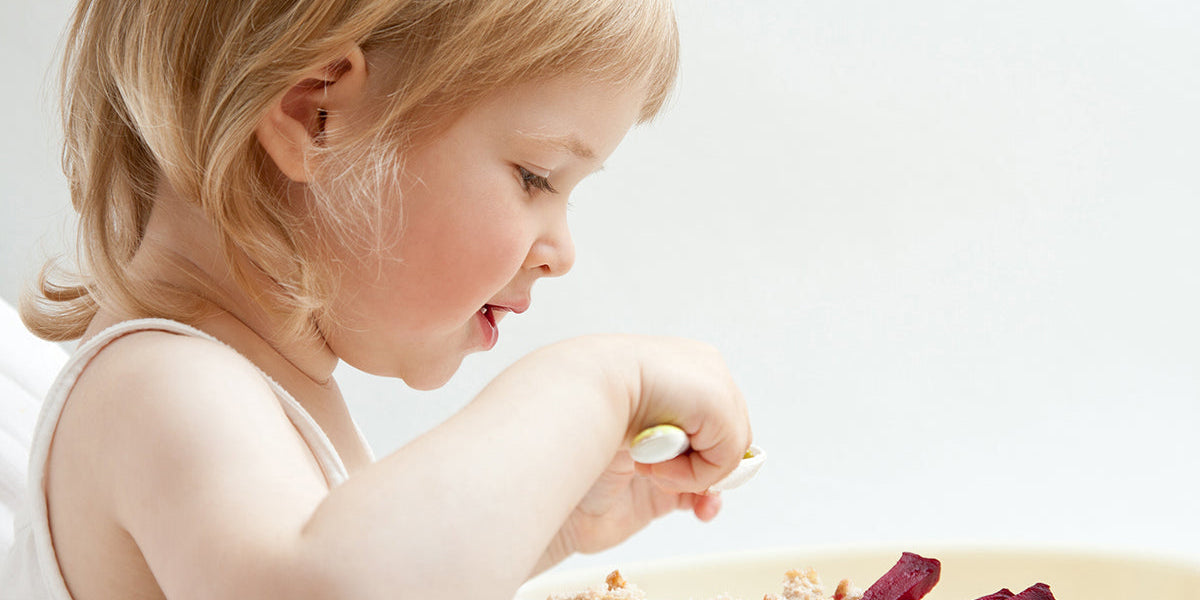Snacks are an important part of daily nutrition. According to the United States Department of Agriculture, the average American consumes up to one-quarter of their total calories from snacks (1). Therefore, the kind of snacks your child consumes can have a significant impact on their health. High-protein snacks can be beneficial in your child’s diet for many reasons, including reducing appetite and hunger levels, maintaining blood sugar, and building muscle. In this article, you will learn about the healthful benefits of including high-protein snacks in your child’s diet.
Reduces appetite and hunger levels
Protein is an important macronutrient that provides energy for your child’s daily needs. According to research, protein is one of the most filling macronutrients (2). This finding means that including protein with a meal will help your child feel fuller without a large quantity of food. Offering protein for snacks, especially if you have a picky eater, is a good way to ensure your child meets their protein needs without a great deal of food. Offering high protein snacks between meals will also reduce hunger levels and help prevent tantrums before a meal.
Helps maintain blood sugar levels
Adding protein between meals helps prevent a blood sugar crash (3). After consuming a snack, blood sugar levels will rise and then fall. The key is choosing what type of snack your child is eating to prevent blood sugar levels from dropping too quickly between meals. When choosing snacks, choose foods high in protein and fiber; these are digested slowly to prevent a crash. Maintaining children’s blood sugar levels between meals is also the key to avoiding mood swings and irritable behavior.
Helps build muscle
Protein is the building block of muscles. According to research, this fact means that eating a sufficient amount of protein helps maintain muscle growth and muscle mass (4). Children engaged in sports also need to consume an adequate amount of protein in their diet to ensure that their needs are met. Providing high-protein snacks is an excellent way to get more protein in your child’s diet and prevent any muscle loss.
Protein snacks to include in your child’s diet:
Here are a couple of healthy protein snacks to include in your child’s daily routine.
- Greek yogurt. Opt for plain yogurt and add in fresh fruit for a naturally sweetened snack.
- Nut butter or sunflower butter. This option is a simple way to add protein to toast, crackers, or fruit. Choose whole-grain bread and crackers for an additional protein boost.
- Smoothies. Add in yogurt, milk or soy milk, and nut butter as a base, and toss in your child’s favorite fruits for a delicious snack.
- Hard-boiled eggs. Serve these with a side of fruit or whole-grain crackers or even as an egg salad.
- Hummus or bean dips. Serve this protein-filled snack with corn tortilla chips or crunchy veggies for a filling snack.
- Cheese. Serve in sticks, cubes, slices, or rounds.
- Nuts or seeds. This snack packs a punch of protein in a small serving. Serve with fruit or whole-grain crackers.
Sources
- Sebastian, R. S., Wilkinson Enns, C.; Goldman, J. D. Snacking Patterns of U.S. Adults. Retrieved from https://www.ars.usda.gov/ARSUserFiles/80400530/pdf/dbrief/4_adult_snacking_0708.pdf
- Halton, T. L., & Hu, F. B. (2004). The effects of high protein diets on thermogenesis, satiety and weight loss: a critical review. Journal of the American College of Nutrition, 23(5), 373–385. https://doi.org/10.1080/07315724.2004.10719381
- Franz M. J. (1997). Protein: metabolism and effect on blood glucose levels. The Diabetes educator, 23(6), 643–651. https://doi.org/10.1177/014572179702300603
- Bosse, J. D., & Dixon, B. M. (2012). Dietary protein to maximize resistance training: a review and examination of protein spread and change theories. Journal of the International Society of Sports Nutrition, 9(1), 42. https://doi.org/10.1186/1550-2783-9-42



